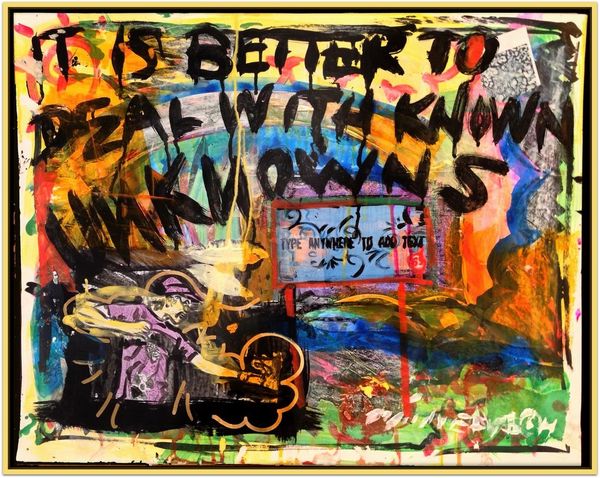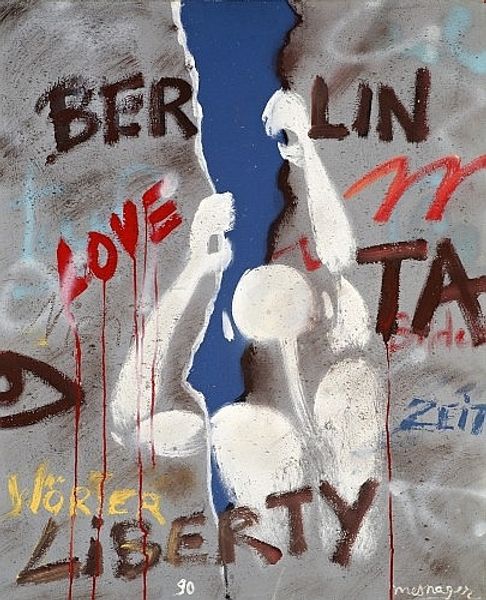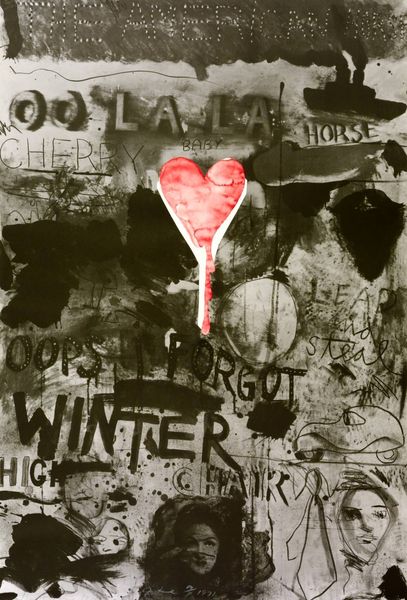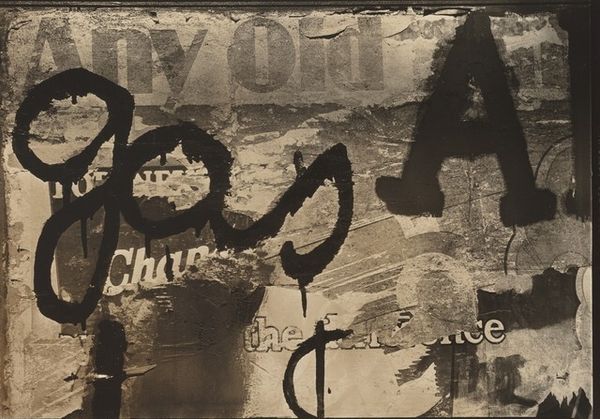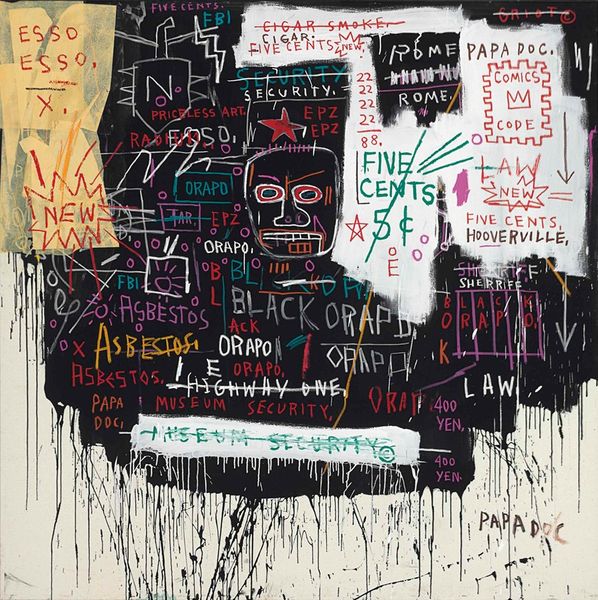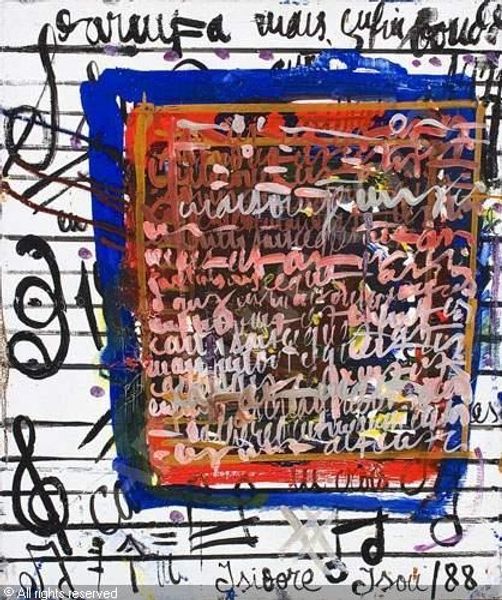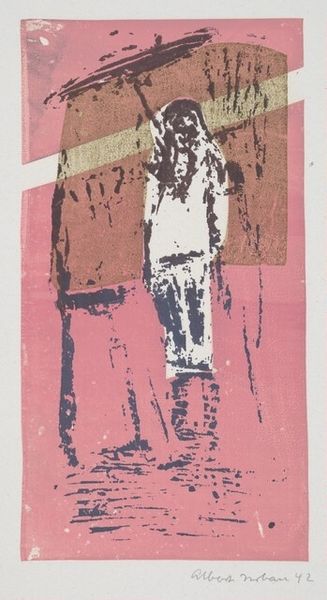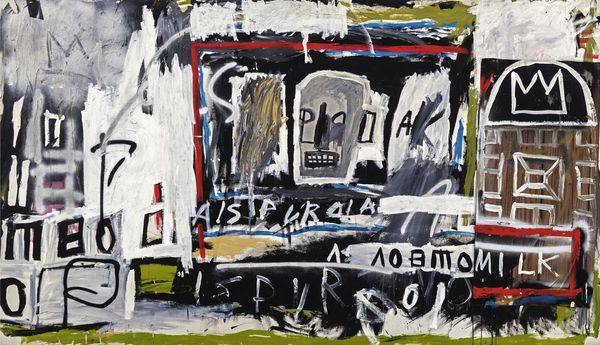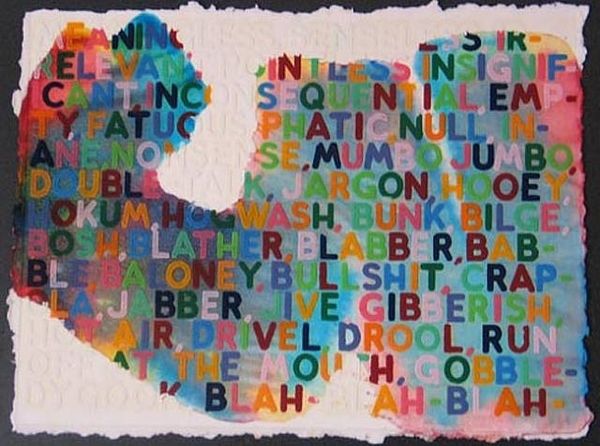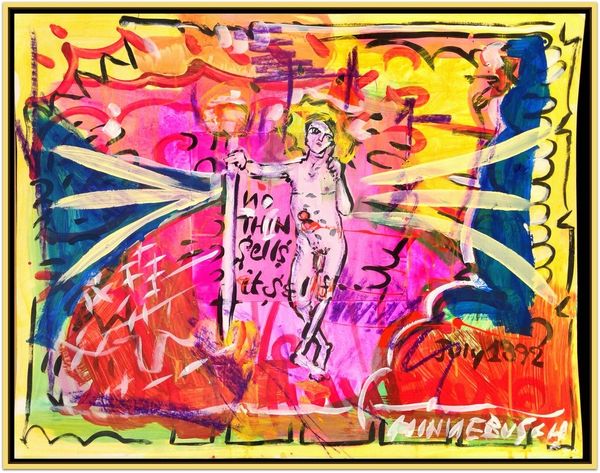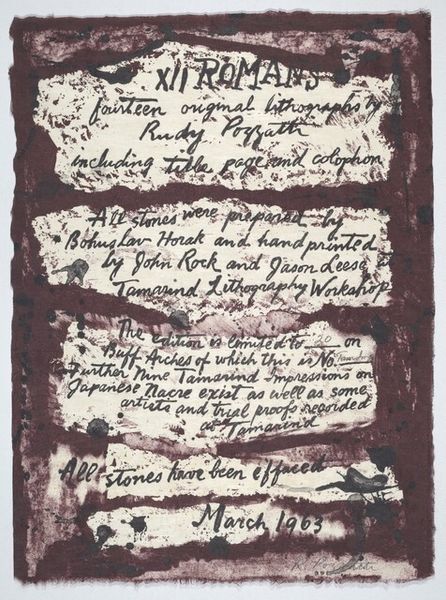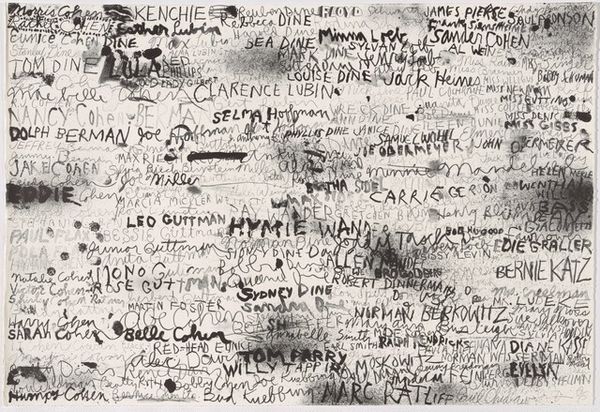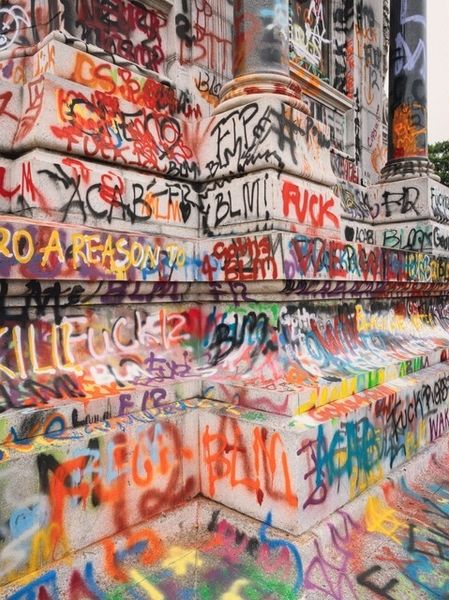
mixed-media, painting, acrylic-paint
#
action-painting
#
portrait
#
mixed-media
#
pasteup
#
street-art
#
painting
#
graffiti art
#
acrylic-paint
#
graffiti-art
#
pop-art
Copyright: Burhan Dogancay,Fair Use
Editor: We're looking at "Gentil Inc." by Burhan Dogancay, painted in 1965 using mixed media. The canvas is awash with text and graffiti-like imagery. It almost feels like a snapshot of a wall, layered with different voices and tags. What do you see in this piece? Curator: It's a powerful visual representation of urban communication and the voices that often go unheard in mainstream narratives. Dogancay, especially through his engagement with street art, brings to light the stories and messages embedded within the everyday urban landscape. These names, tags, and even the "Gentil Inc." all speak to a collective identity, a shared space marked by individual expressions. Editor: So, it’s less about traditional artistic expression and more about capturing a social moment? Curator: Exactly. Think about it: Who are these people whose names are scrawled across the "wall"? What are their stories? By immortalizing this fleeting form of expression, Dogancay challenges the art world's elitism, asserting that art exists beyond gallery walls and museums, belonging to the people and reflecting their realities. How do you interpret the linked hearts with names? Editor: To me, the graffiti resembles love declarations like in a public space; it seems a cry for being acknowledged or seen. But there is sadness too. Curator: Yes, it represents more than just romance. The act of writing on walls is an expression of identity, a form of resistance, and an assertion of existence in the face of anonymity. In many ways, it foreshadows how social media serves this role today. Editor: That's fascinating. I never considered the piece as a form of social commentary. Now, seeing it as capturing marginalized voices gives the piece so much more depth! Curator: Exactly! By seeing art in broader social terms, we expand the very nature of what qualifies as art, or social commentary.
Comments
No comments
Be the first to comment and join the conversation on the ultimate creative platform.
